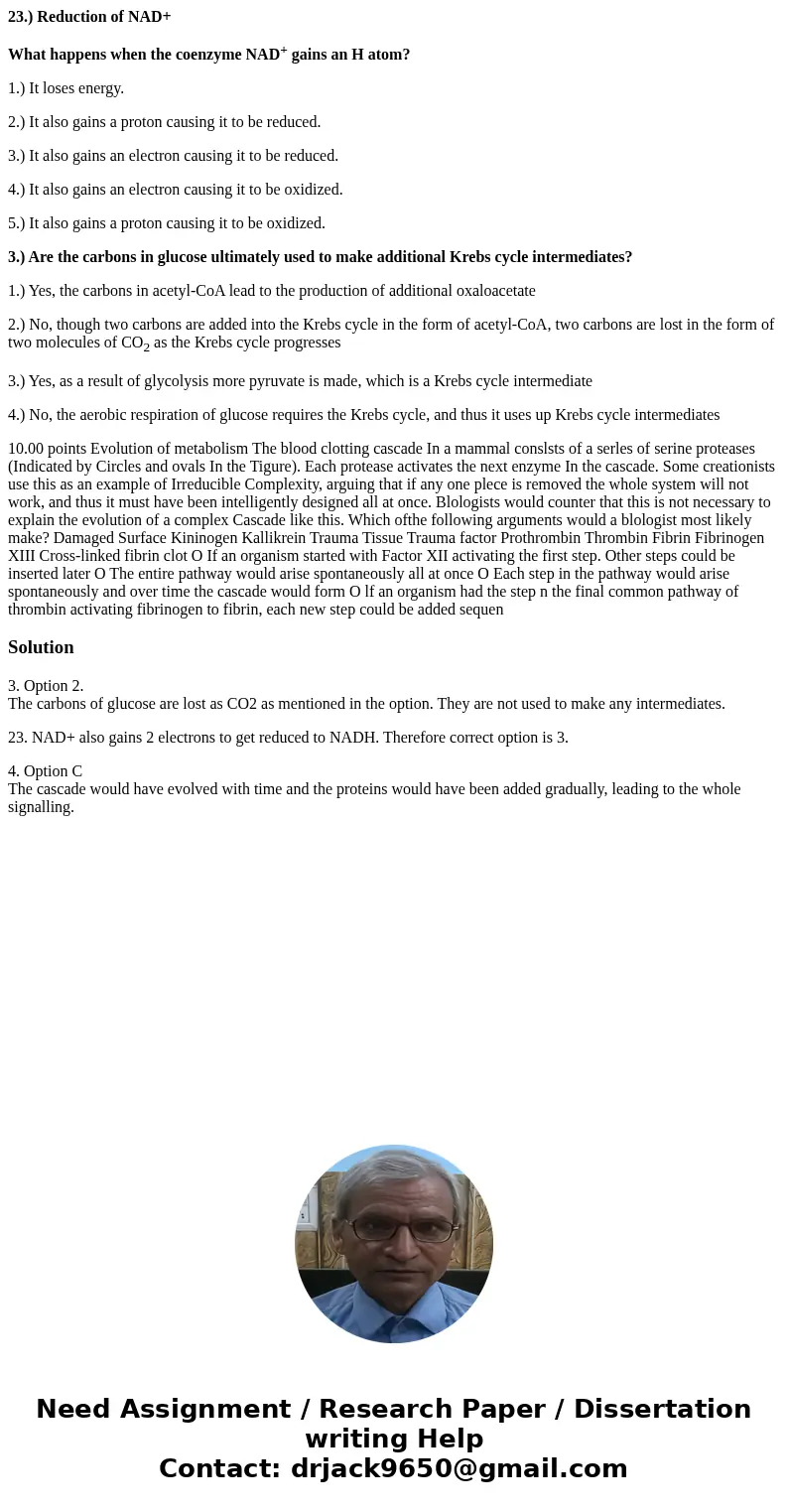23 Reduction of NAD What happens when the coenzyme NAD gains
23.) Reduction of NAD+
What happens when the coenzyme NAD+ gains an H atom?
1.) It loses energy.
2.) It also gains a proton causing it to be reduced.
3.) It also gains an electron causing it to be reduced.
4.) It also gains an electron causing it to be oxidized.
5.) It also gains a proton causing it to be oxidized.
3.) Are the carbons in glucose ultimately used to make additional Krebs cycle intermediates?
1.) Yes, the carbons in acetyl-CoA lead to the production of additional oxaloacetate
2.) No, though two carbons are added into the Krebs cycle in the form of acetyl-CoA, two carbons are lost in the form of two molecules of CO2 as the Krebs cycle progresses
3.) Yes, as a result of glycolysis more pyruvate is made, which is a Krebs cycle intermediate
4.) No, the aerobic respiration of glucose requires the Krebs cycle, and thus it uses up Krebs cycle intermediates
10.00 points Evolution of metabolism The blood clotting cascade In a mammal conslsts of a serles of serine proteases (Indicated by Circles and ovals In the Tigure). Each protease activates the next enzyme In the cascade. Some creationists use this as an example of Irreducible Complexity, arguing that if any one plece is removed the whole system will not work, and thus it must have been intelligently designed all at once. Blologists would counter that this is not necessary to explain the evolution of a complex Cascade like this. Which ofthe following arguments would a blologist most likely make? Damaged Surface Kininogen Kallikrein Trauma Tissue Trauma factor Prothrombin Thrombin Fibrin Fibrinogen XIII Cross-linked fibrin clot O If an organism started with Factor XII activating the first step. Other steps could be inserted later O The entire pathway would arise spontaneously all at once O Each step in the pathway would arise spontaneously and over time the cascade would form O lf an organism had the step n the final common pathway of thrombin activating fibrinogen to fibrin, each new step could be added sequenSolution
3. Option 2.
The carbons of glucose are lost as CO2 as mentioned in the option. They are not used to make any intermediates.
23. NAD+ also gains 2 electrons to get reduced to NADH. Therefore correct option is 3.
4. Option C
The cascade would have evolved with time and the proteins would have been added gradually, leading to the whole signalling.

 Homework Sourse
Homework Sourse